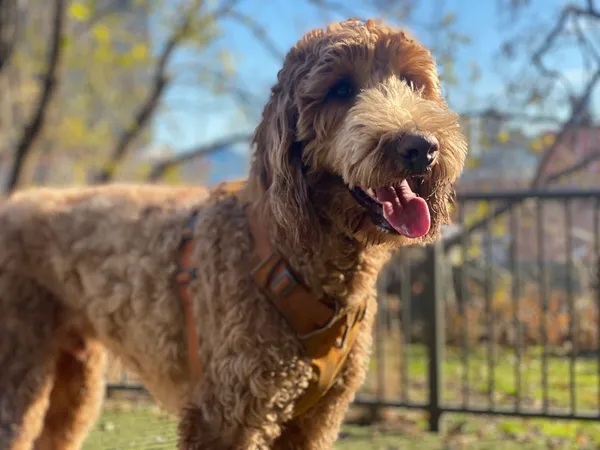Walking your dog is essential for both you and your dog as it helps you build a bond and an opportunity to exercise and explore the world together. However, if your dog pulls on the leash, lunges at other dogs, or constantly stops to sniff, walks can quickly become frustrating and stressful for you and your furry friend.
Fortunately, with the help of a Hoboken dog walker, you can teach your dog to walk nicely on a leash and enjoy peaceful, enjoyable strolls around the neighborhood.
This comprehensive guide explores the steps and techniques to train your dog to walk without being aggressive with a Hoboken dog walker.
1. Choose the Right Equipment
You must have the right equipment before training your dog. Choose a sturdy, well-fitting collar or harness that provides control without restricting your dog’s movement or causing discomfort. Additionally, opt for a leash that is the appropriate length and material for your dog’s size and strength. A standard 4-6 foot leash made of nylon or leather is generally recommended for most dogs.
2. Establish Leadership and Control
Instructing your dog to walk politely on a leash hinges on asserting your leadership and retaining control during the stroll. Use a confident, assertive tone of voice and maintain a relaxed but authoritative posture to communicate your leadership to your dog. Start by practicing fundamental commands like “sit,” “stay,” and “heel” in a controlled setting before advancing to outdoor walks.
3. Start with Short, Positive Walks
When introducing your dog to leash walking, start with short, positive walks in a familiar, low-distraction environment. Choose a quiet, safe location, such as your backyard or a nearby park; reduce distractions to enable your dog to concentrate on the learning process. Start with brief walks initially, gradually extending the duration and distance as your dog grows more easily and responsive.
4. Use Positive Reinforcement
Positive reinforcement is a potent training method, rewarding desirable behaviors with praise, treats, or toys. When training your dog, use positive reinforcement to reward moments of calm, attentive behavior, such as walking by your side without pulling or lunging. Be generous with praise and rewards, and use high-value treats to motivate and reinforce good behavior.
5. Practice Loose Leash Walking
Teach your dog to walk well-mannered on a leash by practicing loose leash walking techniques. Start by holding the leash with a relaxed but firm grip and encourage your dog to walk by your side using verbal cues and gentle leash guidance. Whenever your dog walks politely without pulling, reward them with praise and treats. If your dog begins to pull or forge ahead, halt your walk and wait for them to return to your side before proceeding.
6. Address Pulling and Lunging Behavior
If your dog exhibits pulling or lunging behavior while walking on a leash, it’s essential to address these issues promptly and effectively. One effective technique is a “stop and redirect” approach, where you stop walking whenever your dog pulls and wait till they calm down before resuming. Additionally, practice “turn and go” maneuvers, where you change direction whenever your dog pulls, reinforcing the idea that pulling will not lead to forward progress.
7. Use Desensitization and Counterconditioning
When your dog exhibits reactive behaviors like barking, growling, or lunging at other dogs or stimuli during walks, employing desensitization and counterconditioning techniques can prove beneficial. Slowly introduce your dog to triggers from a distance where they can remain calm and relaxed, and utilize positive reinforcement to establish positive associations with these stimuli. Over time, gradually decrease the triggers’ distance and intensity while rewarding calm, non-reactive behavior.
8. Seek Professional Guidance and Support
If you’re struggling to train your dog to walk nicely on a leash, don’t hesitate to seek professional guidance and support from a certified dog trainer or Hoboken dog walker. Professional trainers can provide personalized guidance, practical tips, and hands-on support to address specific training challenges and achieve desired results. Additionally, enlisting the help of a Hoboken dog walker can provide valuable opportunities for supervised practice and reinforcement of training techniques during walks.
9. Be Patient and Consistent
Training a dog to walk on a leash takes time, patience, and consistency. Be patient with your dog and yourself, and remember that every dog learns at their own pace. Stay consistent with your training efforts, consistently practicing and reinforcing desired behaviors. You can train your dog to walk politely on a leash with patience, persistence, and positive reinforcement. And enjoy peaceful, enjoyable walks together in Hoboken and beyond.
10. Enjoy the Journey
Most importantly, don’t forget to enjoy the process of teaching your dog. Walking together is a wonderful opportunity to strengthen your bond, enjoy the outdoors, and explore the world together. Celebrate your successes, no matter how small, and embrace the process of learning and growing together as a team.
Conclusion
By choosing the right equipment, establishing leadership and control, using positive reinforcement, practicing loose leash walking techniques, addressing pulling and lunging behavior, using desensitization and counterconditioning, seeking professional guidance and support, being patient and consistent, and enjoying the journey, you can teach your dog to walk on a leash and enjoy peaceful walks together in Hoboken and beyond.







